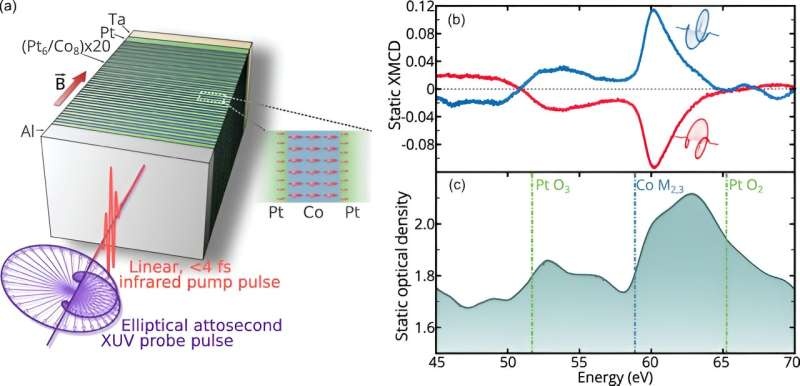Groundbreaking research has revealed a novel method to directly generate spin currents using ultrashort laser pulses, paving the way for the development of electronic devices that run faster and more efficiently.

Harnessing the Power of Spin
Spin currents are a different kind of electrical flow, in which electrons organzise according to their spin direction. According to those who study it, minute particles called spin currents could be the key to making electronic devices that are both faster and more energy efficient.
Until now, the attempts to produce spin currents with other materials have always been sluggish since this was only possible using indirect methods practicing lasers as a way of creating the spin but they were never beneficial. The spin directions of its output electrons tend to be a muddle, and extracting the desired spins involves elaborate filtering.
Now, an international team of physicists has just reached a milestone: They can directly excite and steer spin currents using specific types of ultrashort laser pulses. This breakthrough method could herald a new generation of faster, more energy-efficient, and cheaper electronic devices.
The Laser-Driven Spin Flip
For the target block, researchers composed a stack of 20 alternating layers of platinum and cobalt, each but one nanometer thick. They then set the block in a vessel and ran a strong magnetic field from bottom to top, aligning the electron spins in both the platinum and cobalt layers.
The next step was to hit the block with a linearly polarized laser before firing a circularly polarized probe laser. By using these two lasers, they succeeded to invert the electron spins between the layers in a few femtoseconds (a thousand billionth of second).
The researchers discovered the lasers caused an immediate change in the magnetic ordering within both layers of the block, which modified its magnetic intensity. During experimental measurements, those theoretical calculations confirmed that the observed electron interactions indeed aligned with expectations.
It is much faster than any of the previous methods, which all used more indirect ways of producing spin currents. The prospect of manipulating the spin of electrons directly could allow cool new applications in future electronics.
Conclusion
This work represents a major advancement in the field of spintronics,,, whereby an approach to directly induce spin currents with ultrashort laser pulses has been discovered. The spin-based approach offers a route for developing faster, more energy-efficient and more economical to run electronic devices. The study opens doors to a future of computing and communication technologies potentially more streamlined into our everyday activities.
